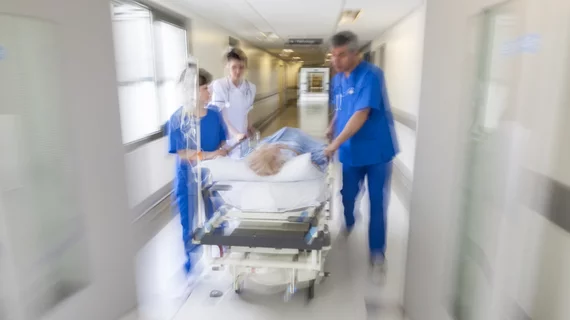CMS issues workplace violence memorandum for hospitals
The Centers for Medicare and Medicaid Services (CMS) issued a memorandum reminding healthcare providers of their obligation to protect staff against workplace violence.
The notice stated that leaders of healthcare institutions need to ensure they are providing adequate training, sufficient staffing levels and ongoing assessment of patients and residents for indicators of violence to implement care interventions and adapt the environment appropriately to keep staff safe.
The memorandum comes after numerous healthcare industry groups as well as some lawmakers asked the Department of Justice to intervene against growing threats of violence against children’s hospitals over gender-affirming care. The wave of anti-transgednder threats and violence could interfere with care delivery and lead to harm against patients or hospital staff.
In addition, the healthcare industry has been battling ongoing gun violence threats, leading a group of healthcare CEOs to urge Congress to act on the issue earlier this year.
[VIDEO: Why healthcare organizations should take on the gun violence epidemic]
Healthcare workers are a particularly vulnerable group for workplace violence due to working directly with people who have a history of aggressive behavior, behavioral issues or who may be under the influence of drugs. One recent study revealed a whopping 90% of healthcare workers said they’ve experienced or been close to violence while on the job. Workplace violence is also a factor in burnout and causing healthcare workers to leave their post.
The memorandum is also timely as many hospitals and health systems face ever-growing financial constraints and labor issues, including staffing shortages. CMS noted it has fined hospitals in the past for failing to meet the standards of safe settings under the Medicare Hospital Conditions of Participation (CoPs).
“Examples include a nurse in a unit without adequate staffing who was sexually assaulted by a behavioral health patient who was stopped only through intervention by other patients; a patient who died after hospital staff and law enforcement performed a takedown that resulted in a hospital custodian holding the patient down on the floor with his knee against the patient’s back, during which the patient stopped breathing and died; and a patient who was acting out and shot in his hospital room by off-duty police officers following the failure of hospital staff to perform appropriate assessment and de-escalation of the patient,” CMS wrote in the memorandum. “These cases highlight systemic failures in facilities that place both patients and staff at risk.”
The agency outlined the numerous ways hospitals are required to meet safe setting requirements, including implementing a patient risk assessment strategy, addressing emergency events and training and education for staff.
See the memorandum here.

